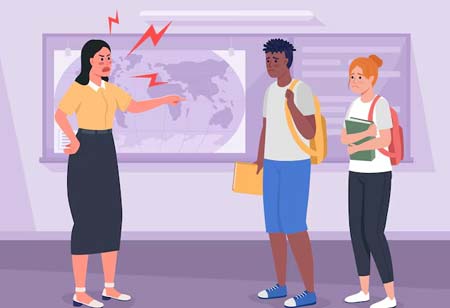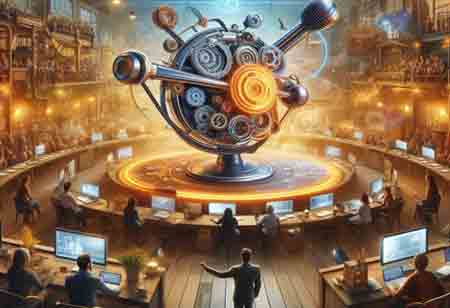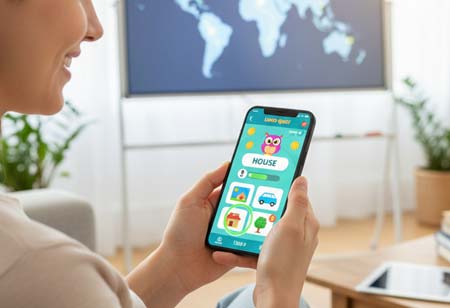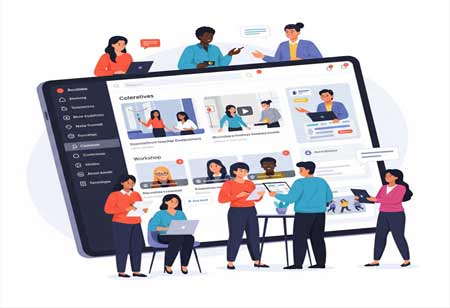THANK YOU FOR SUBSCRIBING
Be first to read the latest tech news, Industry Leader's Insights, and CIO interviews of medium and large enterprises exclusively from Education Technology Insights
Enhancing Learning Through Visual Media
The integration of visual communication in education has revolutionized the way knowledge is disseminated and absorbed.

By
Education Technology Insights | Wednesday, January 08, 2025
Stay ahead of the industry with exclusive feature stories on the top companies, expert insights and the latest news delivered straight to your inbox. Subscribe today.
The integration of visual communication in education has revolutionized the way knowledge is disseminated and absorbed. Visual communication refers to the use of images, graphics, videos, and other visual media to convey information. In an educational context, it transcends the boundaries of traditional teaching methods, offering dynamic and engaging ways to facilitate learning. By leveraging visual tools, educators can address diverse learning styles, enhance retention, and bridge linguistic and cultural barriers.
Visual communication plays a pivotal role in making abstract concepts more tangible. It transforms complex information into digestible formats, fostering better comprehension among learners. For instance, in subjects like mathematics and science, diagrams, graphs, and animations simplify intricate processes and theories. Similarly, history lessons enriched with historical photographs, maps, and timelines provide learners with a contextual understanding that textbooks alone cannot achieve.
Moreover, visual communication is instrumental in catering to varied learning preferences. According to Neil Fleming’s VARK model, learners are often categorized into visual, auditory, reading/writing, and kinesthetic types. Visual learners, who comprise a significant proportion of the student population, benefit immensely from images, videos, and infographics. These tools not only enhance their engagement but also ensure better retention of knowledge. For non-visual learners, visual aids serve as complementary tools that reinforce textual and auditory information.
The effectiveness of visual communication in education is closely linked to how the human brain processes information. Research in cognitive psychology reveals that visual inputs are processed 60,000 times faster than text. The brain’s dual coding theory suggests that information presented in both visual and verbal formats creates stronger mental connections, leading to improved recall. This phenomenon is evident in the widespread use of visual storytelling in educational videos and presentations.
For example, biology lessons often employ animations to demonstrate cellular processes like mitosis and meiosis. Watching these processes unfold visually enables students to grasp each step’s sequential nature, reinforcing their understanding more effectively than static diagrams or textual descriptions. Similarly, mnemonic devices like mind maps combine text with visuals, aiding memory retention for complex subjects.
In an increasingly globalized world, classrooms are becoming more diverse. Language differences can pose significant challenges to effective communication and learning. Visual communication serves as a universal language that transcends these barriers. Images, symbols, and videos can convey ideas without relying heavily on verbal or written explanations, making education more inclusive.
The advent of digital technology has exponentially expanded the scope of visual communication in education. Interactive whiteboards, virtual reality (VR), augmented reality (AR), and digital apps offer immersive experiences that traditional methods cannot replicate. These tools transform passive learning into active exploration, encouraging critical thinking and creativity.
Virtual reality, for example, allows students to explore historical landmarks, distant planets, or microscopic organisms without leaving the classroom. By engaging multiple senses, VR provides a holistic understanding of subjects, making learning both memorable and enjoyable. Similarly, AR applications overlay digital information onto the physical world, enabling interactive experiences like solving mathematical equations by manipulating 3D models.
Despite its advantages, integrating visual communication into education is not without challenges. One significant hurdle is the digital divide, which refers to the unequal access to technology among students. While affluent schools and families can afford advanced tools like VR headsets and high-speed internet, underprivileged communities often lack these resources. This disparity exacerbates educational inequality, limiting the benefits of visual learning to a privileged few.
To maximize the impact of visual communication in education, certain best practices should be followed. Firstly, visuals must align with the learning objectives and complement the curriculum. Random or overly decorative visuals can distract students and dilute the educational message. Instead, visuals should be purposeful, reinforcing key concepts and encouraging active participation. Secondly, simplicity is key. Complex visuals with excessive details can overwhelm learners and hinder comprehension. Clear, concise, and well-labeled graphics are more effective in conveying information. For instance, a pie chart with labeled segments is easier to interpret than an intricate 3D chart with overlapping elements.
Thirdly, interactivity enhances engagement. Incorporating elements like clickable diagrams, drag-and-drop activities, and interactive timelines encourages students to actively participate in the learning process. Such features not only make lessons enjoyable but also deepen understanding through hands-on experience.
The future of visual communication in education is promising, driven by advancements in technology and pedagogy. Artificial intelligence (AI) is poised to play a significant role in personalizing visual content for individual learners. AI-powered platforms can analyze students’ learning patterns and adapt visual materials to suit their preferences and pace, ensuring a more tailored educational experience.
Visual communication is a powerful ally in education, transforming the way knowledge is imparted and retained. By making learning more engaging, accessible, and inclusive, visual tools address the diverse needs of modern classrooms. However, to harness their full potential, educators must navigate challenges such as the digital divide and content quality. By adopting best practices and staying attuned to technological advancements, visual communication can continue to redefine education, preparing learners for a visually rich and interconnected world.
I agree We use cookies on this website to enhance your user experience. By clicking any link on this page you are giving your consent for us to set cookies. More info

However, if you would like to share the information in this article, you may use the link below:
www.educationtechnologyinsightsapac.com/news/enhancing-learning-through-visual-media-nid-3088.html






